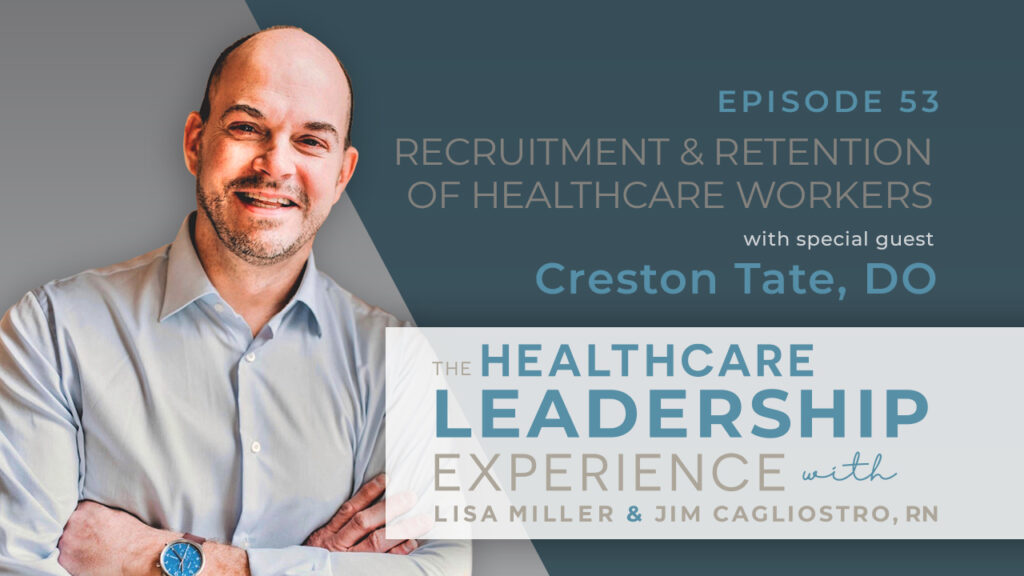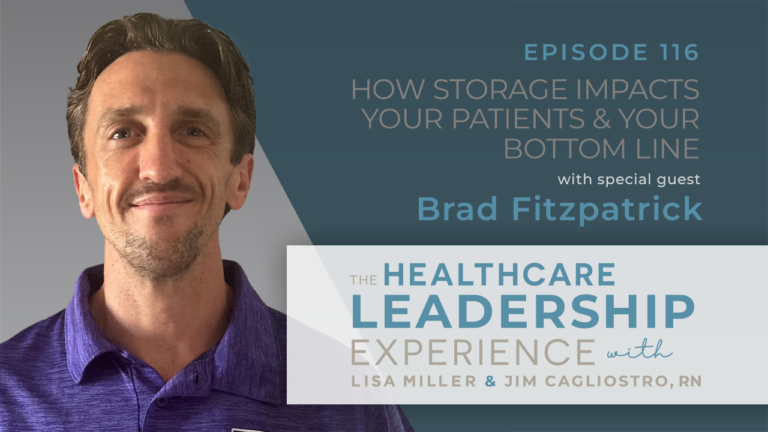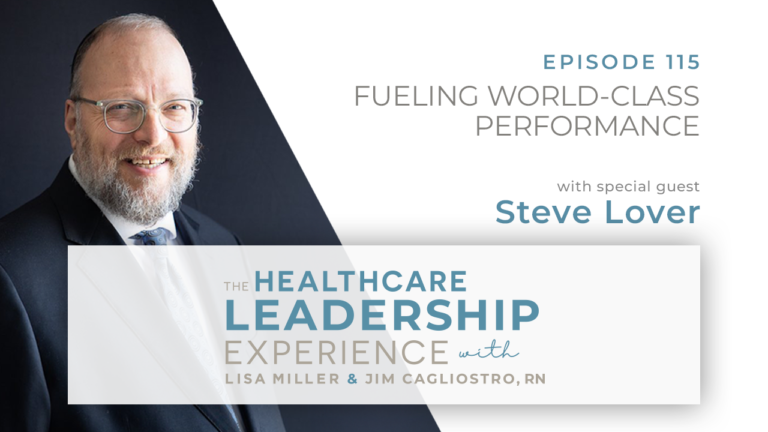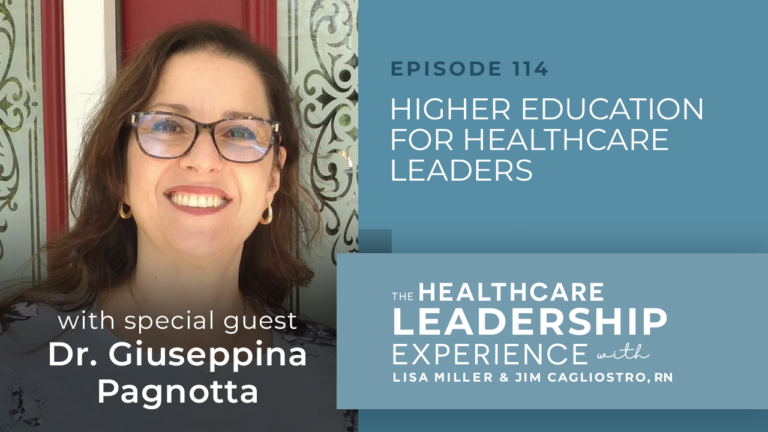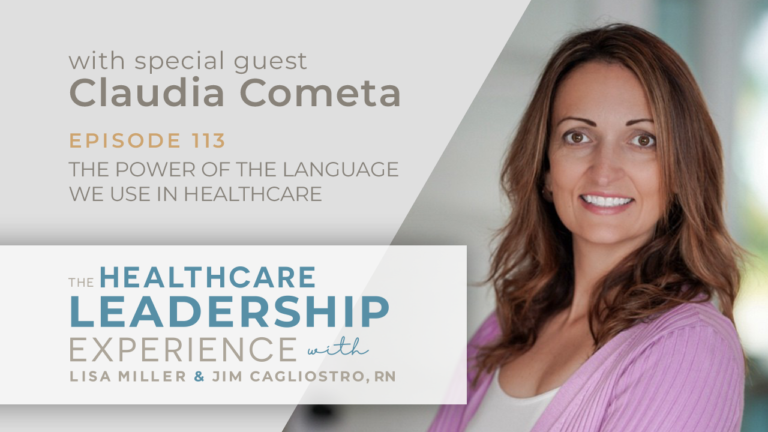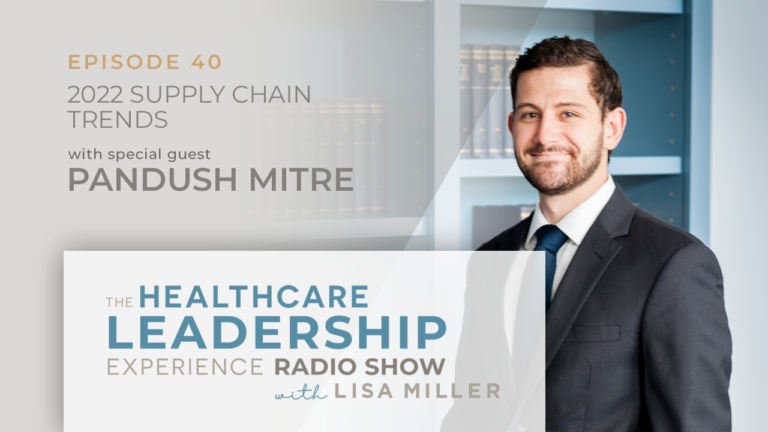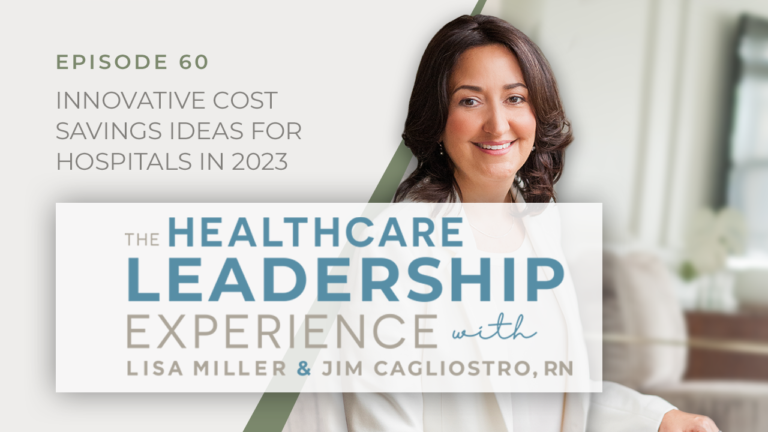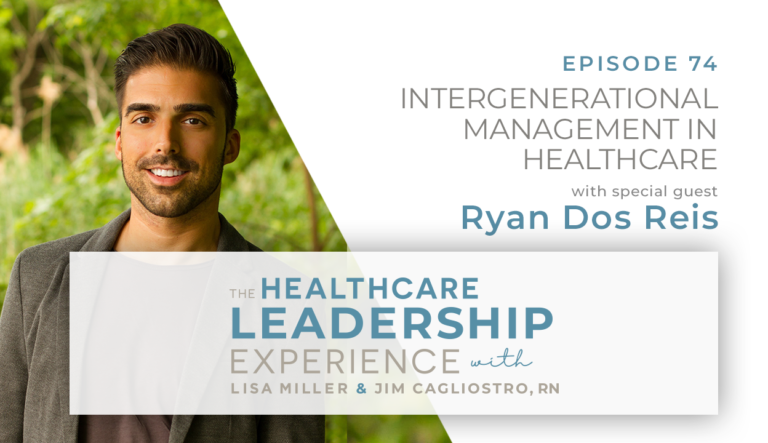In Episode 53 of The Healthcare Leadership Experience Jim Cagliostro is joined by Creston Tate, DO, Medical Director of WellSpan Health Urgent Care to discuss the challenges of hiring healthcare workers in the wake of ‘’The Great Resignation.’’
Episode Introduction
Demand for urgent care has intensified since 2020. In this episode, Jim Cagliostro, VIE’s Clinical Operations Performance Improvement Expert, interviewed Creston Tate to explore the impact of the pandemic, the growing demand for urgent care facilities, the reasons behind the ‘’Great Resignation’’, and the need to adapt to a shrinking talent pool.
Show Topics
- The growing demand for urgent care.
- How the ‘’Great Resignation’’ affects patients.
- Reimbursement and the Walmart/Amazon challenge.
- Flexible schedules are essential to attract the right people.
- The shrinking candidate pool.
- Ensuring safety means urgent care sites may close temporarily.
02:13 The growing demand for urgent care.
Creston highlighted the exponential growth in demand for urgent care in the past 6 years.
“My experience grew, my appreciation for medicine grew, my appreciation for the urgent care world, I call it the episodic world of medicine really grew too. There’s clearly a huge gap in care for this particular type of patient that isn’t being provided in the outpatient world. I did that for 17 years and just about six years ago, I transitioned into more of an outpatient urgent care directorship through my current healthcare system and have really enjoyed the growth that we have had, which is probably somewhere around the 12 to 13% growth rate per year in urgent care. As we started with five and now we’re opening up our 15th urgent care this year with record volumes. I’ve seen it in the inpatient world, in the emergency room, and now I’m seeing it in the outpatient world and I’m bringing it all together and it’s been fun to see that happen…..With the influx of patients to emergency departments and the overcrowding of EDs and wait times, perhaps some of your listeners have actually unfortunately experienced a 10 or 12-hour wait in emergency departments, it’s just not fun. It’s been estimated that even up to 50 to 60% of ED visits could have been handled outside of the emergency department, if the resources were there. I think that’s where urgent cares and primary care providers can step in, if there’s enough providers and enough access available for that. I’ve seen a huge switch. I know that for us, we open 12 hours a day. I think if we opened 18, we would have just as big a volume as we do now, if not larger.”
06:08 How the ‘’Great Resignation’’ affects patients.
Creston explained the difference between unfilled jobs in the healthcare sector versus vacancies in retail.
“Whether you go to a restaurant or you go to a convenience store, it seems like there’s a paucity of workers. Despite the published low unemployment rate, it does seem like there’s a lot of jobs that just aren’t being filled. You take that for what it’s worth, but clearly healthcare, maybe isn’t affected more as far as numbers, but what I will say, Jim, is that healthcare is affected more impactfully because it is an essential piece of our fabric. If we don’t have the right number of healthcare workers, people’s health suffers. If we don’t have enough people working at a Walmart, well, you might just have to search around for something a little longer yourself or wait in line a little bit longer, or maybe the shelves aren’t stocked as readily as you would like them to be. The impact there is certainly felt more if somebody can’t get their diabetic medication or their follow-up or their blood work or that CAT scan that they’ve been looking for to follow that tumor, than if somebody is simply shopping for material goods. I do agree with you, the resignation as it’s been called, we’ve seen it. We certainly in our healthcare system have seen it tremendously. What I will say is that we haven’t seen a tremendous loss of… And again, I’ll speak from my own personal experience. In the urgent cares that I work in I don’t think we’ve had a huge number of people leave healthcare. We have had a number of them switch out of urgent care, which has been inundated with complex patients, probably more complex than we should see, and also sicker patients. Going through the pandemic and gowning up with gloves and masks and goggles and all this paraphernalia to try to protect our healthcare workers, it has been quite a ride for our providers and our staff. Quite frankly, I think the burnout rate is really more just fatigue. They’re just tired of this continual ask to see patients who are sicker and sicker and they don’t feel as though perhaps they’re getting reimbursed for the higher level of risk that they’re taking compared to rest of society.”
09:45 Identifying emotional and mental health issues in children
Lisa said mental and emotional health issues were on the rise in children of all ages.
“Especially in times where now there’s more and more of that, even younger students, like elementary school age who have that mental health aspect and need. But with elementary school students, so I wouldn’t say it’s an outright … okay, with middle school though, they’re obviously going through some anxiety, they can tell you, like, “I’m depressed, I’m sad.” Elementary school students, they may not be able to tell you as easily. You see a lot of the same students coming in sometimes with just general complaints, my stomach hurts or I’m tired, or just different things. So yeah, you got to talk to them in a way that they’ll understand and asking the right questions. I mean, there were a handful of times where I remember students coming in just in a panic, breathing heavy. Something had happened and it was caused by that they were now anxious or upset, or just experiencing different symptoms that way. It wasn’t necessarily a physiological medical thing, but more a mental health issue. So yeah, I would definitely say that’s prevalent in elementary school students as well.”
10:16 Reimbursement and the Walmart/Amazon challenge.
Creston said the higher salaries offered by Walmart and Amazon make it difficult for healthcare organizations to compete in attracting talent.
“One of the greatest challenges in healthcare is going to be the big box store. Whether you look at the Walmarts or you look at the Amazons out there that just bought up one medical and 125 stores, which were like healthcare facilities that they bought up. Now there’s going to be a challenge of trying to retain our own employees when maybe someone like Amazon could offer them more dollars per hour. You thin out the potential pool of good healthcare workers, even greater when that kind of thing occurs. Again, that’s big business. I understand that. Their goal is to try to provide better healthcare to more people in a more efficient and cost-effective way. Whether or not they succeed in that, I don’t know, but you have that. Then you also have the challenge of other very wealthy companies who are offering $17 or $18 or $19 an hour as a startup when we’re looking for medical assistants that typically are $17/16.50 an hour. They may not go into medical assistant work. Instead, they’re going to take another job because it pays $3 to $4 an hour because inflation is causing them to make those decisions for their family so that they can feed their family. We’re seeing perhaps the same number of workers who are being thinned out and perhaps pulled away from healthcare that once maybe in the past would have considered healthcare to go into as a stable job.”
12:40 Flexible schedules are essential to attract the right people.
Creston commented that healthcare must adapt to candidate needs to fill the gaps in the workforce.
“When I went into medicine, when I got hired by that first company to work family medicine, I worked hard and I came in on Saturdays and I took call. I didn’t complain. I double and triple booked. It was all that sort of thing, because it was kind of expected perhaps at that time. When we interview candidates now for positions, I had to put that own bias aside and I had to say, “If I see a candidate who is really a strong candidate for us, that I want to get on our team, I may have to think a little bit outside the box and say, ‘Okay, I have a 25 or a 28-year-old mother who’s perhaps an RN who we want to hire because she is just fantastic. Her skill set is great. Her fit and personality is perfect for our team. I have to figure out a way that I’m going to have her on our team.'” It may be that I have to work my schedule a little bit differently because of her because she has a family and she has other things that are balancing her life a little differently than perhaps I would have back in those days. I would have to also think about healthcare. How can we give her the hours that she needs so that she can help us and also provide the healthcare for her family that she needs? I think there’s a lot of ways in which I think we, as leaders of these larger companies have to start thinking ways of adapting to the needs of our workers today. If I were to simply say, “Well, that’s just not the way we’ve done things.” I probably wouldn’t find anybody to work for me because we have to work around people’s schedules today.”
17:44 The shrinking candidate pool.
Creston stated that numbers of available candidates have fallen significantly since Covid.
“Prior to 2020, for any given opportunity to work as a provider or staff member for us, we would have five to seven candidates. Now we have about three. Our qualifications perhaps haven’t changed too much, but we’ve had to sometimes look a little bit deeper, maybe ask a little bit different type of question to the three candidates that we may only get and say, “Okay. Well, we’re only going to get three for this position because we need to get somebody relatively soon, who is the best one out of these three?” I think that’s been a little bit more difficult for us. I guess, we don’t have… Obviously the larger the pool, the better you can say, “Okay. This is the perfect person.” When your pool is narrowed, you sometimes have to take chances and sometimes our chances are right on and we thought, “Boy, I thought you were going to be a question mark, but you have turned out to be an amazing provider.” We’ve had to do that. Our number of candidates typically is much smaller now to find the best fit. One thing that we’ve also changed and really try to do more of is we try to involve our providers a little bit more in that interview process, meaning that the leaders will do the initial interview and then we bring that candidate back and we have them spend six or eight hours in our site. It’s volunteer hours, but we tell them, “Listen, it may be worth it for you to make sure that you are working in the right place for you. We like you, but we want to make sure that you like the site, that you like the people that you’re working with. Because if you sense there’s going to be tension here, we would rather you know that at the very beginning of your employment, and we can address those issues if that’s going to be the case.”
23:12 Ensuring safety means urgent care sites may close temporarily
Creston said that the struggle to hire staff makes it difficult to guarantee high quality care.
“One of the recent articles I’ve read talked about, where is the biggest fright in healthcare today? Again, in my urgent care world, number one 58% of people said hiring medical assistants and rad techs. There are crucial positions that we need in our healthcare system that there just isn’t enough people out there to get. We say the pool is very dry and it’s frustrating because we have actually had to close a couple of our sites on certain days, strictly because we didn’t have the right support. We want to make sure that we provide the safest care and also the most compassionate care, but also do it in a way that we’re not burning out and we’re not frustrating our providers. It wouldn’t be fair for me, Jim, if you were working for me and I said, “Jim, I know there’s normally three staff members and two docs working today, but unfortunately you’re the only person on, so you’re going to have to carry the load for three people and we only have one doc too so you’re probably going to have long wait times today.” You’re already defeated even before the day starts. That becomes very difficult and we have to boost each other up. We have to just carry the torch for each other because I think that if we don’t look for ways in which we can solve some of these healthcare crisis issues with staffing, that’s going to be the demise of a lot of good healthcare. A lot of people let their health go during COVID and we’re seeing sicker and sicker patients because they couldn’t get this or they couldn’t get that. Or maybe they were afraid to go out, and some still are afraid to go out and get care.”
Show Links
📱 Connect with Jim Cagliostro on LinkedIn
📱 Connect with Creston Tate on LinkedIn
🖥 Check out VIE Healthcare Consulting
You’ll Also Hear:
- From family medicine to the ER: how Creston’s previous experience equipped him for his role in urgent care.
- The “Great Resignation” in numbers. “According to some of their reports, the healthcare industry has lost an estimated 20% of its workforce, including 30% of nurses…. in 2022, nearly 1.7 million people have quit their healthcare jobs…. Then a recent survey of a thousand healthcare professionals showed that 28% had quit a job because of burnout.”
- Why Covid is affecting career choice when it comes to healthcare. “Three years ago, we didn’t have as much of that concern that they’re going to take something home and infect their family.”
- The cultural shift: from “lifers” to frequent job changers. How a change in perspective means employees move jobs every three to five years. The one sign that indicates your candidate has done their pre-interview preparation.
- Adapting to change: the growing number of “greenies” in the healthcare sector. “A physician’s assistant is a classic example. Physician assistants oftentimes come through their medical career. They have that PA degree when they get out, but some of them have never stepped foot in an office before.”
What To Do Next:
- Subscribe to The Cost Advantage for Healthcare Leaders and receive a special report on 15 Effective Cost Savings Strategies.
- Learn more about the simple 3 step process to work with us.
- If you are interested in learning more, the quickest way to get your questions answered is to speak with one of our margin improvement experts. Schedule a call with our team.
Episode Transcripts
CLICK HERE TO DOWNLOAD THE PDF TRANSCRIPT
CLICK HERE TO OPEN THE TRANSCRIPT
Introduction (00:01):
Welcome to the Healthcare Leadership Experience Radio Show. This show hosted by Lisa Miller and Jim Cagliostro, brings you insights from both the business and clinical sides of healthcare.
Lisa Miller, CEO and founder of VIE Healthcare Consulting and managing director at SpendMend, has established herself as a recognized leader in healthcare operational performance improvement — and with her team has generated over $1 billion in financial improvements for VIE’s clients since 1999. Lisa loves to think differently and collaborates with healthcare leaders and their teams to solve challenges and create new innovative approaches that directly impact the business and clinical side of healthcare.
As a registered nurse since 2007, Jim Cagliostro has worked in critical care, perioperative services and outpatient settings at nationally-recognized medical facilities across three states. His passion for the patient, along with his experience in a variety of healthcare settings, gives him a unique perspective on how to enhance the patient experience and workplace culture for any health system, big or small.
On this show, you will hear from innovators and leaders from within healthcare and across multiple industries. We will bring you relevant and trending topics in healthcare that include strategy, finance, patient experience, innovation, leadership, communication, marketing, and much, much more.
Jim (01:28):
Hi, this is Jim Cagliostro, and you’re listening to the Healthcare Leadership Experience Radio Show on HealthcareNOWradio. Today’s guest is Creston Tate, medical director for WellSpan Urgent Care in Central Pennsylvania. We’re excited to learn. More specifically, today we’re going to be talking about the recruitment and retention of healthcare workers and how that’s changed over the last few years.
We’re excited to have Creston with us. Creston, welcome thanks for joining us today.
Creston Tate (01:53):
Jim, it’s been a pleasure talking with you just in preparation for this. It’s exciting and I’m glad to be here.
Jim Cagliostro (01:59):
Awesome. Well, let’s jump right into it. First of all, I think just for people to get to know you a little bit, tell us a little bit about yourself, your experience in healthcare over the years, what you do now, and even you could talk a little about how the last few years have been maybe different for you.
Creston Tate (02:13):
Sure. Well, I started my medical career back in the early ’80s, finished up my residency in ’97 in family medicine. So I have a little bit of experience in the family medicine world, where I spent about three and a half years in a multi-provider medical practice in family medicine primary care, and transitioned into emergency medicine. I really felt like that was a draw for me. I really enjoyed the hands-on patient experience and I think that the emergency department afforded that to me and it was a little bit more fast-paced, which I enjoyed too.
I actually left family medicine and went into emergency medicine, a very busy emergency room in Lancaster and worked in their fast track, which is their step-down unit. In the years that I was there, which was about 17 and a half years that I worked that emergency department, we ended up seeing volumes of 120,000 people a year in our side of the ER, if I could put it that way in the fast track. Saw about 50,000 of those every year.
My experience grew, my appreciation for medicine grew, my appreciation for the urgent care world, I call it the episodic world of medicine, really grew too. There’s clearly a huge gap in care for this particular type of patient that isn’t being provided in the outpatient world. So I did that for 17 years and just about six years ago, I transitioned into more of an outpatient urgent care directorship through my current healthcare system and have really enjoyed the growth that we have had, which is probably somewhere around the 12 to 13% growth rate per year in urgent care.
As we started with 5 and now we’re opening up our 15th urgent care this year with record volumes. I’ve seen it in the inpatient world, in the emergency room, and now I’m seeing it in the outpatient world and I’m bringing it all together and it’s been fun to see that happen.
Jim Cagliostro (04:07):
That’s great. That’s great. I know this isn’t the focus of our conversation, but I did just want to ask you briefly about that. You’re saying you went from 5 urgent cares to 15 now. Do you believe that’s the trend across the country? I know we’re hearing more about that. Healthcare is shifting more to an outpatient basis.
Creston Tate (04:22):
Yeah. With the influx of patients to emergency departments and the overcrowding of EDs and wait times, perhaps some of your listeners have actually unfortunately experienced a 10 or 12-hour wait in emergency departments, it’s just not fun. It’s been estimated that even up to 50 to 60% of ED visits could have been handled outside of the emergency department, if the resources were there.
I think that’s where urgent cares and primary care providers can step in, if there’s enough providers and enough access available for that. I’ve seen a huge switch. I know that for us, we open 12 hours a day. I think if we opened 18, we would have just as big a volume as we do now, if not larger. Yeah, there has been a trend.
Jim Cagliostro (05:07):
I’ll attest to that. I don’t know if I ever shared with you. I think it was about 24 hours I was waiting in the emergency room until I eventually got a bed. My wife and I definitely lean towards the urgent care if that’s an option and for many reasons, as you just mentioned. I’m going to throw a few statistics out there and none of these will surprise you, but I want to talk about this. This is from Forbes in the spring of 2020.
According to some of their reports, the healthcare industry has lost an estimated 20% of its workforce, including 30% of nurses. This year alone, so in 2022, nearly 1.7 million people have quit their healthcare jobs. That was as of the spring of this year. Then a recent survey of a 1,000 healthcare professionals showed that 28% had quit a job because of burnout.
With all those things in mind, and I’m sure you’re familiar with those numbers or at least what’s going on, do you believe I guess what many people are calling the Great Resignation, has impacted the healthcare industry the same way it has affected other areas of American society? Do you think it’s been maybe a greater impact in healthcare? What are some of your thoughts on that?
Creston Tate (06:08):
Yeah. It’s a tough question because I think we all see it. Whether you go to a restaurant or you go to a convenience store, it seems like there’s a paucity of workers. Despite the published low unemployment rate, it does seem like there’s a lot of jobs that just aren’t being filled. You take that for what it’s worth, but clearly healthcare, maybe isn’t affected more as far as numbers, but what I will say, Jim, is that healthcare is affected more impactfully because it is an essential piece of our fabric.
If we don’t have the right number of healthcare workers, people’s health suffers. If we don’t have enough people working at a Walmart, well, you might just have to search around for something a little longer yourself or wait in line a little bit longer, or maybe the shelves aren’t stocked as readily as you would like them to be.
The impact there is certainly felt more if somebody can’t get their diabetic medication or their follow-up or their blood work or that CAT scan that they’ve been looking for to follow that tumor, than if somebody is simply shopping for material goods. I do agree with you, the resignation as it’s been called, we’ve seen it. We certainly in our healthcare system have seen it tremendously. What I will say is that we haven’t seen a tremendous loss of… And again, I’ll speak from my own personal experience.
In the urgent cares that I work in I don’t think we’ve had a huge number of people leave healthcare. We have had a number of them switch out of urgent care, which has been inundated with complex patients, probably more complex than we should see, and also sicker patients. Going through the pandemic and gowning up with gloves and masks and goggles and all this paraphernalia to try to protect our healthcare workers, it has been quite a ride for our providers and our staff.
Quite frankly, I think the burnout rate is really more just fatigue. They’re just tired of this continual ask to see patients who are sicker and sicker and they don’t feel as though perhaps they’re getting reimbursed for the higher level of risk that they’re taking compared to rest of society.
Jim Cagliostro (08:06):
Sure. That’s something actually we’ve talked about at VIE, this idea of burnout and a lot of times in nursing. I mean, my wife and I have done this too, because of whatever situation you’re in and you’re maybe sensing burnout coming on, you look for a change in scenery where you can still continue to serve in some sort of healthcare role.
But what people might have looked in the past to say, “Oh, go to an urgent care, it may be a little less crazy than the emergency room.” What you’re saying is just the complexity and everything that they’ve had to deal with, maybe it isn’t that much of a change of pace from the emergency room to the urgent care now, compared to what you’d say, I guess before COVID, right?
Creston Tate (08:41):
Yeah. Three years ago, we didn’t have as much of that concern that they’re going to take something home and infect their family. It was perhaps there, maybe that occasional rare chicken pox case, or maybe that rare hand foot mouth that comes through the door. Something that they could have taken home to their family, there wasn’t the stigma for those diseases even as there is with COVID.
I mean, of course, everybody knows the COVID death rate was tremendously high there for quite some time and I think anybody who worked a shift couldn’t go home without wondering, or at least perhaps throwing up a prayer that said, “Lord, please don’t let me infect my family when I go home.”
They were stripping off their clothes in the garage and throwing them in the wash right away and getting in the shower because they wanted to do whatever they could to try to prevent any potential infection to their family or loved ones and we didn’t see that kind of behavior prior to COVID.
Jim Cagliostro (09:32):
You mentioned that I think back to that spring of 2020, and my wife was there on the front lines and at the bedside. You could tell her perspective and the way she would talk about it was much different than the way I would talk, because I didn’t have that face-to-face interaction, but I’m glad you brought that to our attention, something to consider at least.
You also mentioned about, I’m not sure quite how you said it, but about people felt like, or at least probably feel like they’re not being reimbursed for all of the extra risk they’re taking. I know labor expense is a factor, but what do you see as the greatest contributor to the challenge of retaining good healthcare workers? Is there something that you feel has really led people away from healthcare altogether, at least away from what you’re seeing?
Creston Tate (10:16):
Yeah. One of the greatest challenges in healthcare is going to be the big box store. Whether you look at the Walmarts or you look at the Amazons out there that just bought up one medical and 125 stores, which were like healthcare facilities that they bought up. Now there’s going to be a challenge of trying to retain our own employees when maybe someone like Amazon could offer them more dollars per hour.
You thin out the potential pool of good healthcare workers, even greater when that kind of thing occurs. Again, that’s big business. I understand that. Their goal is to try to provide better healthcare to more people in a more efficient and cost-effective way. Whether or not they succeed in that, I don’t know, but you have that. Then you also have the challenge of other very wealthy companies who are offering 17 or 18 or $19 an hour as a startup when we’re looking for medical assistants that typically are 17/16.50 an hour.
They may not go into medical assistant work. Instead, they’re going to take another job because it pays $3 to $4 an hour because inflation is causing them to make those decisions for their family so that they can feed their family. We’re seeing perhaps the same number of workers who are being thinned out and perhaps pulled away from healthcare that once maybe in the past would have considered healthcare to go into as a stable job.
Jim Cagliostro (11:39):
That’s a great point. If you are just tuning in, you are listening to the Healthcare Leadership Experience Radio Show on HealthcareNOW Radio, and I’m your host, Jim Cagliostro. This show is sponsored by VIE Healthcare Consulting, a SpendMend company, which provides leading-edge financial and operational consulting for hospitals, healthcare institutions, and other providers of patient care.
Since 1999, VIE has been a recognized leader in healthcare costs, hospital purchase services, healthcare benchmarking, supply chain management, and performance improvement. You can learn more about VIE Healthcare Consulting at viehealthcare.com.
Okay. So moving on, Creston. What are some effective strategies for retaining healthcare workers? I’m sure there’s a number and depending on your environment, depending on your situation, geography, I’m sure that culture plays a role, but can you name and describe maybe some effective strategies for retaining those healthcare workers that you want to keep, that you need to keep?
Creston Tate (12:40):
Yeah. It’s a tremendously great question because I have had to change, I’ve had to have a little bit of a come-to-Jesus moment with myself a few times and a sense that I’m a little old school. I’ve been around for 26 years now doing medicine. When I went into medicine, when I got hired by that first company to work family medicine, I worked hard and I came in on Saturdays and I took call. I didn’t complain. I double and triple booked.
It was all that sort of thing, because it was kind of expected perhaps at that time. When we interview candidates now for positions, I had to put that own bias aside and I had to say, “If I see a candidate who is really a strong candidate for us, that I want to get on our team, I may have to think a little bit outside the box and say, ‘Okay, I have a 25 or a 28-year-old mother who’s perhaps an RN who we want to hire because she is just fantastic. Her skill set is great. Her fit and personality is perfect for our team. I have to figure out a way that I’m going to have her on our team.'”
It may be that I have to work my schedule a little bit differently because of her because she has a family and she has other things that are balancing her life a little differently than perhaps I would have back in those days. I would have to also think about healthcare. How can we give her the hours that she needs so that she can help us and also provide the healthcare for her family that she needs?
I think there’s a lot of ways in which I think we, as leaders of these larger companies have to start thinking ways of adapting to the needs of our workers today. If I were to simply say, “Well, that’s just not the way we’ve done things.” I probably wouldn’t find anybody to work for me because we have to work around people’s schedules today.
Jim Cagliostro (14:19):
Sure. I imagine that you see a candidate that you say, “Hey, this is the skill set we need.” They have the right personality. They’ll fit in with the team well, and you want to make accommodations, I’m curious to know, do you ever see people coming in and right off the bat, here’s a list of my demands, or it’s not so subtle? You catch that before it gets to that point.
Creston Tate (14:38):
We have had some of those. I can tell the interviewee, the candidate who comes in and somewhere during the interview, I’ll say, “So what kind of questions do you have for us?” The person who opens their notebook and they have 17 questions written down, that’s the thoughtful person. That’s the person who’s thought about this job who perhaps even looked at your job description and said, “Hey, I just need some clarity on what I’m going to be doing to make sure that this is the right fit for me. I appreciate that. Although a little bit at first I’m thinking, “Oh, boy, here we go.” But it’s also very, very positive because I know they prepared for the job interview. The person who says, “I really don’t have any questions.” Either I did an amazingly good job on my interview, which rarely happens, or they just didn’t come prepared. They were maybe just feeling the waters out and don’t really know what they’re looking for.
I do appreciate that person who prepares for the interview, who perhaps asked the tough questions about, “Hey, what are the dynamics of the personalities in your office here? What kind of things work? Who’s easy to work with? Who’s not easy to work with? What kind of patient or clientele are you working with and is it going to be a challenge for me in those situations?”
These are people who have thought through whether or not they’re going to be the long stayer or the person who’s just here for a couple of weeks.
Jim Cagliostro (15:55):
That’s great. I appreciate that comment because anytime we’d hire new nurses and you’re working alongside them, the big thing we always said, if they’re not asking any questions, maybe there’s an overconfidence or maybe they do pretty well. But in healthcare we always have to be checking with each other and saying, “Hey, is this the right decision for this patient in this particular circumstance?”
My coworkers, we would worry. There’s no questions being asked, so really where are they at? I can imagine… I didn’t really think about that in the hiring process that also comes into play. That’s great.
Creston Tate (16:26):
Yeah. It sure does. I think that it’s rare that I’m… And again, I’ve come to the fact that very few people are going to be lifers that I hire. What I mean by that is I think there’s people who statistically will jump every three to five years. They’ll jump from one job to the next. Again, maybe the grass isn’t greener, but the scenery is a little bit different. I understand that now.
I struggled with that for a while, but I would love to see people be lifers for me working for me. I think people really do enjoy working for me, but I do also appreciate the fact that life circumstances change and they may need something different to be fulfilled maybe in a different way or to challenge them in a different way and so they move on. I don’t take it personally.
They generally say, “Hey, I absolutely have loved working under you. You’ve taught me a ton, but I think I need to spread my wings in a different direction.” That’s all good.
Jim Cagliostro (17:17):
Sure. That’s great. I guess I want to look more… And you’ve kind of touched on this, but I want to look more at the process, the hiring process. What’s the biggest thing you’ve had to change about your approach in the last few years? I imagine you’re not still figuring it out, but maybe those first few months, maybe 2020, 2021, how things have changed, do you feel like you’ve had to drastically change your process or anything that you’ve had to give up or add to the process? I mean, what does that look like for you today?
Creston Tate (17:44):
Yeah. Prior to 2020, for any given opportunity to work as a provider or staff member for us, we would have five to seven candidates. Now we have about three. Our qualifications perhaps haven’t changed too much, but we’ve had to sometimes look a little bit deeper, maybe ask a little bit different type of question to the three candidates that we may only get and say, “Okay. Well, we’re only going to get three for this position because we need to get somebody relatively soon, who is the best one out of these three?”
I think that’s been a little bit more difficult for us. I guess, we don’t have… Obviously the larger the pool, the better you can say, “Okay. This is the perfect person.” When your pool is narrowed, you sometimes have to take chances and sometimes our chances are right on and we thought, “Boy, I thought you were going to be a question mark, but you have turned out to be an amazing provider.” We’ve had to do that. Our number of candidates typically is much smaller now to find the best fit.
One thing that we’ve also changed and really try to do more of is we try to involve our providers a little bit more in that interview process, meaning that the leaders will do the initial interview and then we bring that candidate back and we have them spend six or eight hours in our site. It’s volunteer hours, but we tell them, “Listen, it may be worth it for you to make sure that you are working in the right place for you.
We like you, but we want to make sure that you like the site, that you like the people that you’re working with. Because if you sense there’s going to be tension here, we would rather you know that at the very beginning of your employment, and we can address those issues if that’s going to be the case.” We try to have them come in and shadow. We try to have them spend some time, ask a lot of questions to our staff and our providers. Make sure that they really enjoy what they’re getting into and enjoy the atmosphere as much as anything. The personalities have to be the right fit.
Jim Cagliostro (19:32):
Sure. I would imagine… Well, going down to that number of candidates, would you say, I imagine that can get frustrating, although how long I’ve known your Creston you don’t seem like a person who’s easily frustrated. But I imagine it can be frustrating in that process. With less candidates I imagine you would see people coming in with less experience. Is that safe to assume?
Creston Tate (19:51):
Absolutely. We call them greenies. No offense to them of course, but the greenies are those who perhaps… A physician’s assistant is a classic example. Physician assistants oftentimes come through their medical career. They have that PA degree when they get out, but some of them have never stepped foot in an office before. They don’t know anything about healthcare, other than the internship and the rotations that they did in school.
Different from a nurse practitioner who perhaps spent 1, 3, 5 or 10 years as a nurse before they went back and got their NP. Sometimes PAs come out and they are very new to the healthcare world and we know that. Sometimes we have to take a chance on them and say, “Hey, look, I think your personality is that good and that you seem so excited about this job. I’m willing to take a chance on you. I think I can teach you from here. As long as you keep the personality that you have now, I think we will be successful together.”
Jim Cagliostro (20:42):
That’s a big thing. I know I’ve talked about that with bosses with the hiring process. The knowledge and the skill that can come along, but do you have the right character? Do you have the right personality? Do you fit with the team where this is going to be good? That it could be a potential long-term thing? Because someone could have the greatest skills, the most intelligent that you’ve ever met, but if the personality, if the character, if the work ethic isn’t there, then you’re getting yourself into trouble.
Creston Tate (21:07):
Sure. Jim, you know this as much as anybody as you’ve talked with people through your years, interviewing people and trying to find out whether or not they have compassion and empathy, good communication skills, whether or not they’re just thick-skinned enough, but not too thick-skinned, the person who has a little bit of humor in their life. I think I try to emphasize to everybody that I work with, you’ve got to have a little bit of humor in your day, otherwise the day becomes too tense.
In healthcare, it is too stressful not to have a little bit of laughter. It’s been said, laughter’s the best medicine and I think that the idea is that if you could sort of chuckle your way through the day or find the levity in certain situations with obviously respect and certain others, but finding that and laughing with a patient, helping them to realize that you’re just a real person, you’re just here to help them.
You have skill sets and I have knowledge, maybe that’s beyond what they understand in the healthcare world, but I can also laugh and I can also cry with that patient. Finding that out in an interview is really difficult in 45 minutes, I will say that. Yeah.
Jim Cagliostro (22:09):
Well, and it’s naturally a tense situation, at least for the person applying for the job, the person being interviewed and so it’s tough to bring that humor. Something I always say, especially in healthcare, we are dealing with people in some very serious, very sad, very scary moments. So I know I’ve talked about the importance of including humor, but also knowing your audience, knowing when it’s appropriate.
I think I’ve gotten better at that over the years, but also sometimes my delivery, maybe I just need to work on my delivery and maybe it doesn’t come across right. Yeah, you want to make sure that I guess seeing the humanity of the person that you’re applying, does that fit well with the care that you’re expecting them to provide?
Creston Tate (22:49):
That’s it.
Jim Cagliostro (22:50):
I guess in closing up here, any words of advice… I think everything you’ve shared with us, it’s been eye-opening for me, and I think for our listeners, it’s very helpful. Any words of advice that you want to leave our listeners with? Any healthcare leaders who are struggling to recruit and retain healthcare workers, maybe focusing more on that recruitment side, but any words of advice that you could give for healthcare leaders today?
Creston Tate (23:12):
Yeah. I’d say keep your head up, number one, as much as it’s a struggle. One of the recent articles I’ve read talked about, where is the biggest fright in healthcare today? Again, in my urgent care world, number one 58% of people said hiring medical assistants and rad techs. There are crucial positions that we need in our healthcare system that there just isn’t enough people out there to get.
We say the pool is very dry and it’s frustrating because we have actually had to close a couple of our sites on certain days, strictly because we didn’t have the right support. We want to make sure that we provide the safest care and also the most compassionate care, but also do it in a way that we’re not burning out and we’re not frustrating our providers.
It wouldn’t be fair for me, Jim, if you were working for me and I said, “Jim, I know there’s normally three staff members and two docs working today, but unfortunately you’re the only person on, so you’re going to have to carry the load for three people and we only have one doc too so you’re probably going to have long wait times today.” You’re already defeated even before the day starts. That becomes very difficult, and we have to boost each other up.
We have to just carry the torch for each other because I think that if we don’t look for ways in which we can solve some of these healthcare crisis issues with staffing, that’s going to be the demise of a lot of good healthcare. A lot of people let their health go during COVID and we’re seeing sicker and sicker patients because they couldn’t get this or they couldn’t get that. Or maybe they were afraid to go out, and some still are afraid to go out and get care.
That makes the disease burden of our society even greater and greater. Keep pushing ahead. Encourage those who perhaps want to go into healthcare, encourage them to push ahead and do it. It’s a secure field. It’s a rewarding field. So much of what I do has absolutely nothing to do with monetary satisfaction. It has to do with making people’s lives different, whether it’s the patient’s or the people I work with.
I go to work every day, not so much even for my patients as I do for my coworkers. I go to work because I love the people I work with, and I enjoy seeing them grow and seeing them thrive. I think we need to continue to keep that in mind as we push forward.
Jim Cagliostro (25:23):
That’s great I know I already said it, but Creston, what you’ve provided today has been helpful for me and I’m sure for our listeners. It truly has been a challenge for a lot of healthcare leaders across the country in terms of retaining the good healthcare workers that they already have, but then also recruiting and filling those roles. You mentioned about just not having enough applicants or being very limited.
It’s a challenge. We definitely have our work cut out for us, but I appreciate the insight that you’ve given today. Thank you for being on the show today, Creston. Thank you to our listeners who spent time with us today. If you have any questions about VIE or you want to reach out to me, I’m on LinkedIn. Creston, I know is also on LinkedIn.
Remember that we at VIE love helping hospitals save money and we’re hoping that the show today was helpful. I’m sure it was, and maybe provided some thoughts, some insights or ideas that you can take and use in your own organization. Once again, Creston, thank you so much for the time you gave us today.
Creston (26:18):
You bet. Anytime, Jim. It’s always a pleasure talking with you.
Jim Cagliostro (26:22):
If you have any questions about VIE Healthcare Consulting, a SpendMend company, or if you want to reach out to me or Lisa Miller, you can find us both on LinkedIn.
We at VIE love helping hospitals save money and enhance the patient experience and we’re hoping that today’s episode gave you some new insights or ideas to consider and use in your career and healthcare organization.
